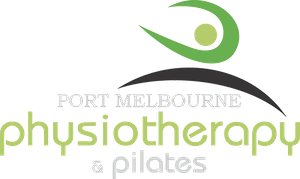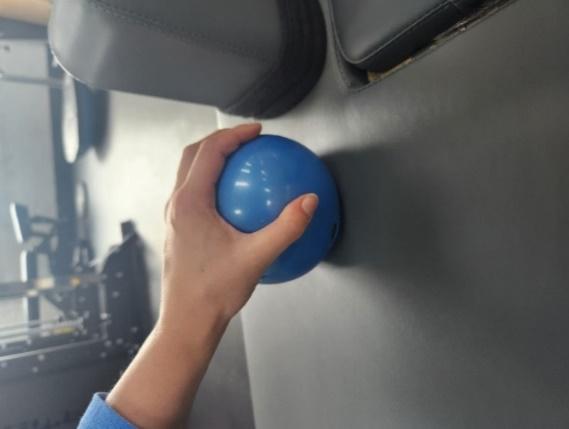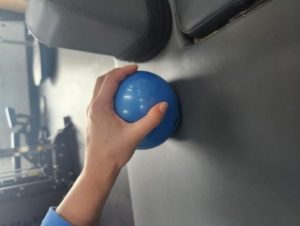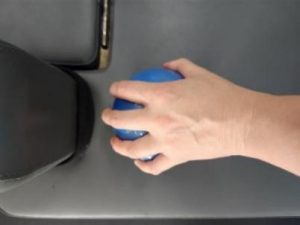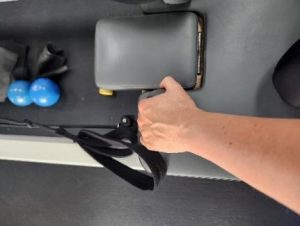Clinical Pilates and the Wrist–Hand Connection
Clinical Pilates is a powerful way to build strength, control and mobility, especially during injury recovery. Our wrists and hands connect us to the springs, bars, and straps that make Pilates unique.
For people with wrist or hand pain, though, the thought of weight bearing or gripping can feel intimidating. Fortunately, Pilates is highly adaptable. With thoughtful modifications, you can continue to enjoy all the benefits of Pilates safely and comfortably.
The Importance of Neutral Positioning
For most wrist and hand conditions, maintaining a neutral wrist and neutral forearm is key to reducing strain and improving comfort.
Neutral wrist deviation: In the frontal plane, the forearm aligns with the long bone of the middle finger.
Neutral wrist extension: In the sagittal plane, the hand stays in line with the centre of the forearm.
Neutral forearm rotation: In the transverse plane, the palm faces the body’s midline, with the thumb pointing upward.
If you find it difficult to sense neutral alignment, place a strip of tape across the back of your hand and forearm for visual feedback.
Condition-Specific Modifications
Wrist Fractures, Arthritis, or Fusion
Maintain a neutral wrist, or reduce the angle of wrist extension.
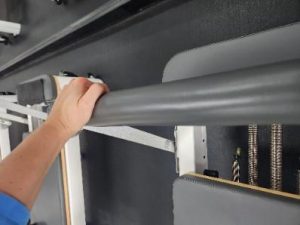
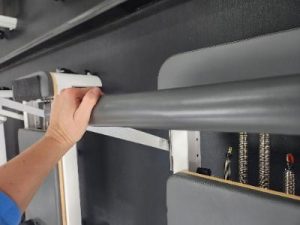
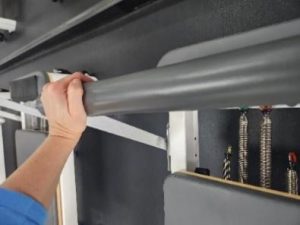
Elevate the heel of the hand with a towel, foam wedge, or Wrist Assured Gloves.
Keep the thumb beside the index finger (not wrapped underneath).
Try weight bearing on fists, dumbbells or raisers, or switch to forearm-supported exercises.

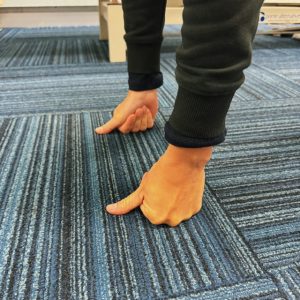
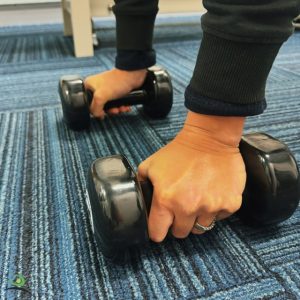
De Quervain’s Tenosynovitis
Keep the thumb softly beside the index finger to reduce tendon load.
Maintain neutral wrist deviation during strap work.

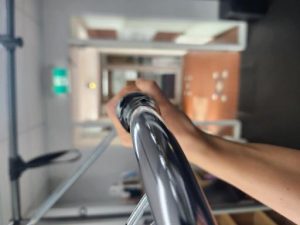
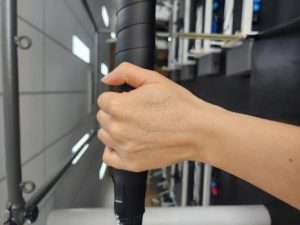
Carpal Tunnel Syndrome (and Post-Release)
Limit wrist and finger extension; maintain a soft, neutral wrist.
Use padding under the heel of the hand to reduce compression.
TFCC Injuries
Keep forearm rotation neutral to protect the ulnar side.
Avoid loaded wrist extension, use fists or forearm weight bearing.
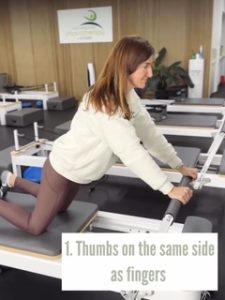
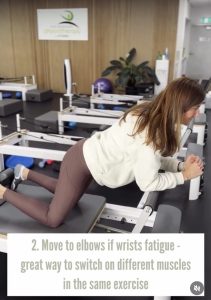
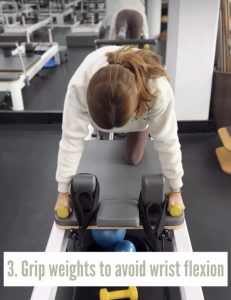
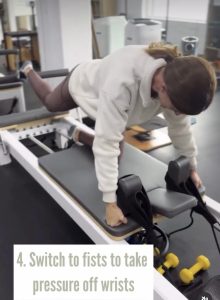
When reintroducing extension, spread fingers evenly to share load and activate supporting muscles on the ulnar side.
ECU Tendinopathy
Avoid repetitive ulnar deviation.
Maintain neutral or pronated forearm positions (avoid supination).
Ulnocarpal Abutment
Avoid loaded wrist extension and heavy gripping in pronation.
Use neutral wrist deviation and either neutral or supinated forearm rotation.
Lateral Epicondylalgia (Tennis Elbow)
Avoid long lever (elbows straight), pronated positions (palms down).
Try palms facing each other or up, with elbows softly bent when weight bearing.
Keep neutral wrist alignment during load.
Medial Epicondylalgia (Golfer’s Elbow)
Work with neutral or pronated forearm positions.
Avoid wrist flexion and reduce grip tension.
Keep elbows bent to shorten lever.
Cubital Tunnel Syndrome
Avoid side planks or exercises placing pressure on the inner elbow.
Limit sustained or repetitive elbow flexion beyond 90°.
Keep the arm extended but not locked.
Thumb Base (CMC) Osteoarthritis
Adopt a wide “C-shape” thumb position for joint stability.
Widen your grip with padding or a towel.
Slightly spread the index finger away from the middle finger to activate stabilisers.
Use props like toning balls or Reformer headrests for support.
Small Joint Arthritis (Fingers)
Stay in mid-range positions for joint protection.
Reduce grip demand by adding foam or towel wraps to handles.
Allow gentle finger curves and avoid the fingers being pulled in the direction of the little finger (ulnar drift).
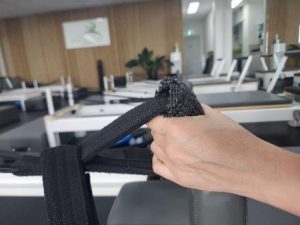
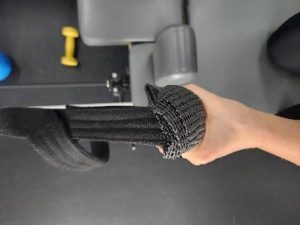
Trigger Finger or Thumb
Relax grip effort and keep the hand open.
Loop straps above the wrists or use wrist cuffs instead of gripping.
Avoid full finger or wrist extension under load.
Strengthen the Supporting Muscles
A strong shoulder complex, stable core, and small muscles of the hand known as the intrinsics all help unload the wrists. To activate the intrinsic muscles when weight bearing, aim to feel a small “lift” under your palm as you press the surface away. Increased feedback can also be given by placing a rubber band around the fingers and spreading against its resistance.
Supportive Braces and Gloves
Wrist Assured Gloves (WAGs): Reduce extension and pad the palm and base of thumb.
Wrist Widget: Adds stability for ulna-sided wrist pain (TFCC, ECU, or DRUJ instability).
WriStable Brace: Supports those with wrist hypermobility, scapholunate instability, or dorsal impingement.
Final Thoughts
With a few smart adjustments, you can continue to enjoy the flow of your Clinical Pilates practice, without your wrists or hands paying the price.
If you’re unsure which modifications or braces are best for you, speak with your physiotherapist or book a session with our Hand Therapist for personalised advice and professional fitting.
- Steph
References:
Anne & Jess. (2020). Pure Barre: Easing Your Wrist Into a Plank. [Photograph of wrist angles]. Precision Physical Therapy. Precisionstl.com/blog/2020/02/27/blog-wrist-posture
Balans Pilates. (2025). Wrist check on the Reformer. [Photograph of wrist and hand position]. Balans Pilates Studio and Treatment Rooms. Instagram.com/balanspilates/p/Dpi0tbMDL6K/
BraceLab. (2023). WriStable Wrist Brace. [Photograph of product in weight bearing position]. BraceLab. bracelab.com.wristabel-prod.html
Jankowski, J. (2020). How ‘ulnar deviation’ can stabilize your wrists and improve your putting stroke. [Photographs of forearm, wrist and hand positions]. EB Golf Media LLC. golf.com/instruction/putting/ulnar-deviation-putting-stroke-fix-jankowski/
Kim, J.-H., Koo, B.-H., Kim, S.-U., & Kim, J.-Y. (2024). “Measurement of 3D Wrist Angles by Combining Textile Stretch Sensors and AI Algorithm”. Sensors, 24(5), 1685. https://doi.org/10.3390/s24051685
Larsson, S. L., Ekstrand, E., Dahlin, L. B., Bjorkman, A., Brogren, E.: “A self-managed exercise therapy program for wrist osteoarthritis: study protocol for a randomized controlled trial”, Trials 24(1):628, 2023. https://doi.org/10.1186/s13063-023-07668-4.
No More Pain Ergonomics. (2016). Do I need a Vertical Mouse?. [Diagram of forearm positions]. No More Pain Ergonomics. nomorepainergonomics.com.au/blogs/no-more-pain-ergonomics/do-i-need-a-vertical-mouse
Pilates Live. (2024). Making four-point kneeling exercises more comfortable. [Photographs of person in modified four-point kneeling]. Pilates Live. pilateslive.co.uk/pilates-blog/making-four-point-kneeling-exercises-more-comfortable/
Reyes, M. (2021). Wrist Pain in Yoga: Do’s and Don’ts. [Photograph of hands weight bearing on floor]. Yogarove. yogarove.com/wrist-pain-yoga/
Whiteley AllCare. (2025). WRISTWIDGET. [Photograph of product in action]. Allcare Distribution Limited. allcare.co.nz/products/wrist-widget
Wrist Assured Gloves. (2018). Need wrist pain relief?. [Photographs of gloves on hands]. Joint Protection Products LLC. wristassuredgloves.com/?srsltid=AfmBOory5u5nmVqptDzGGc4rLqgTGyAalLe-yV9z4Mgsr8TTQtlxhkQF
